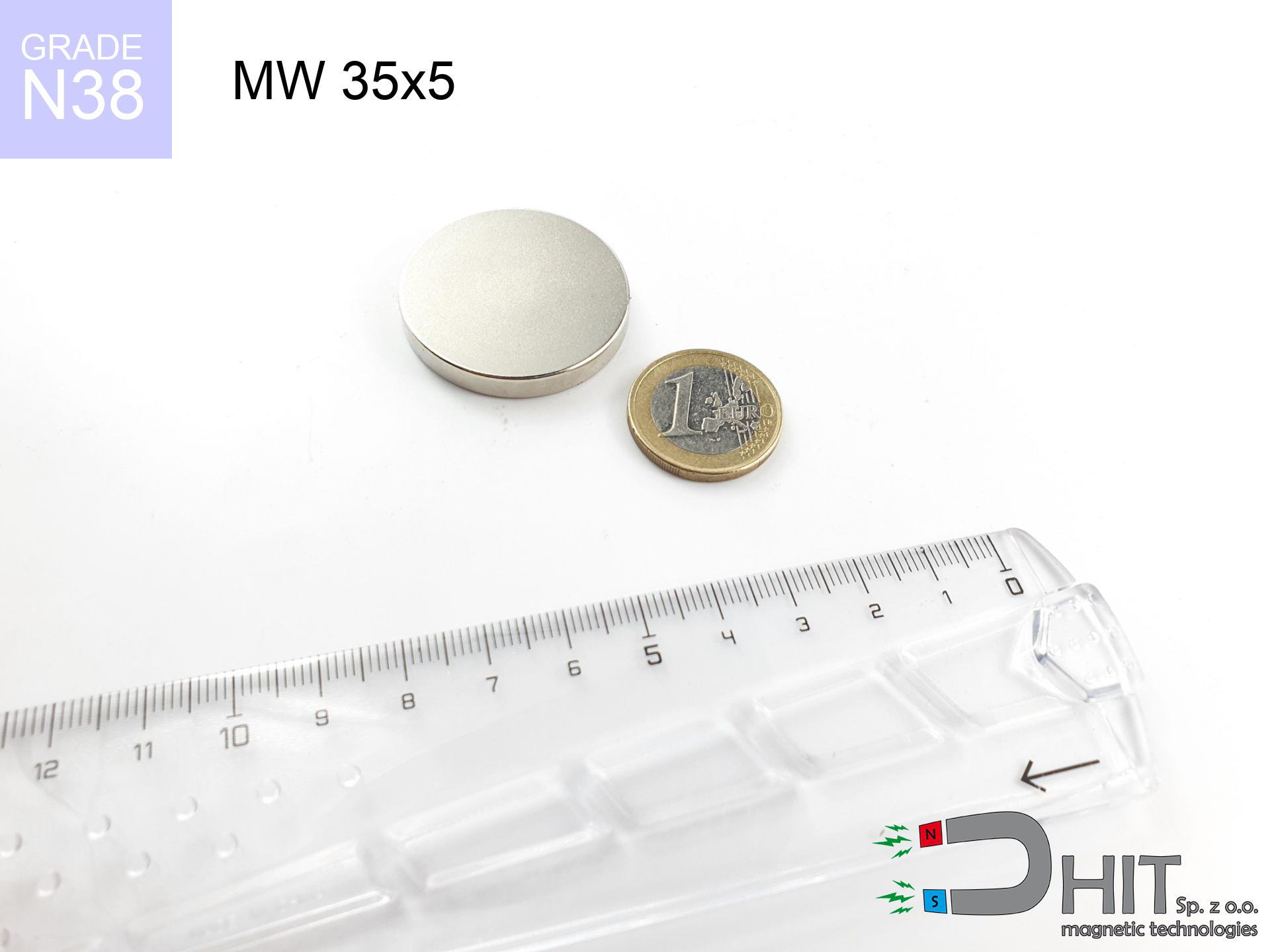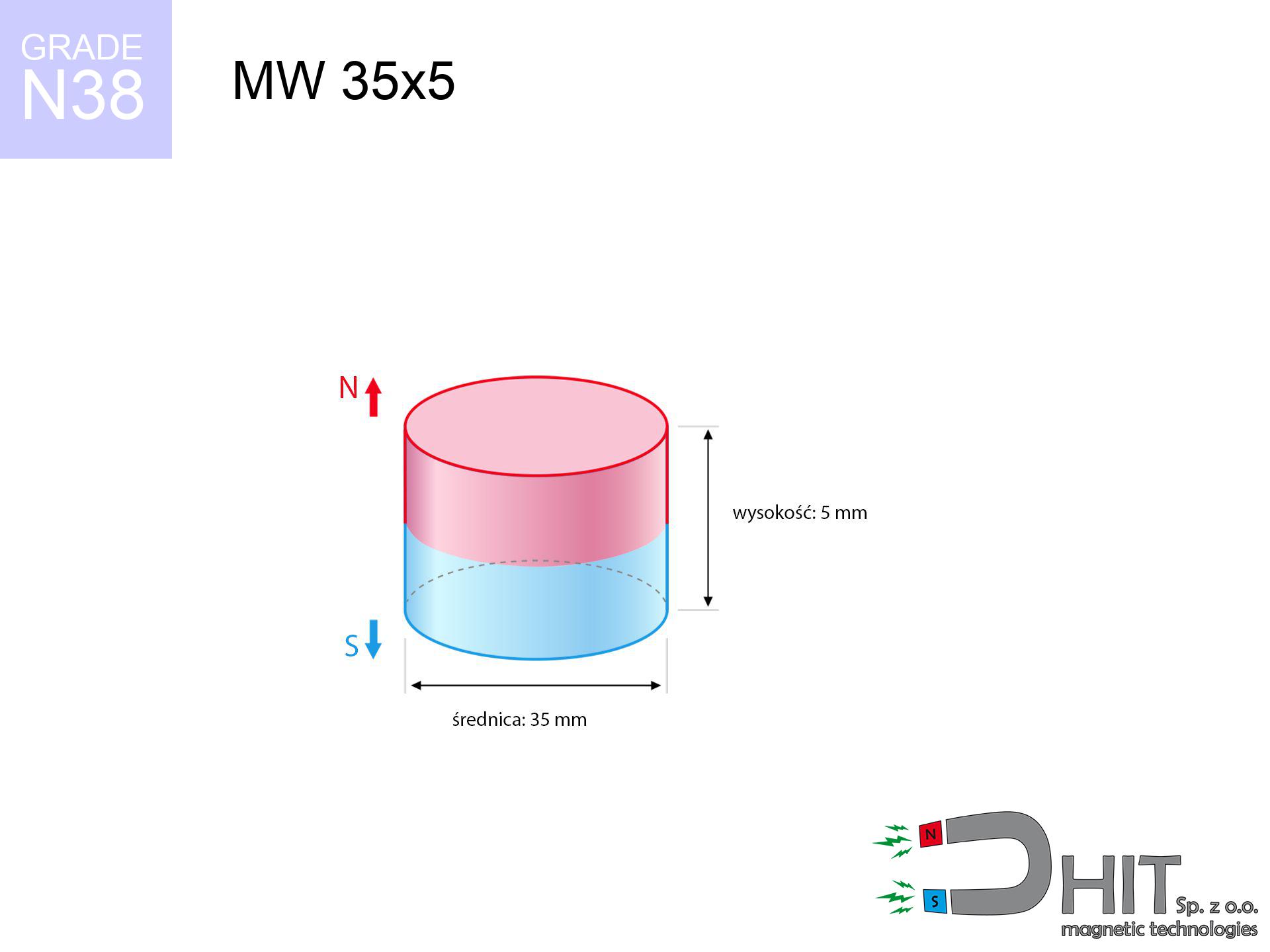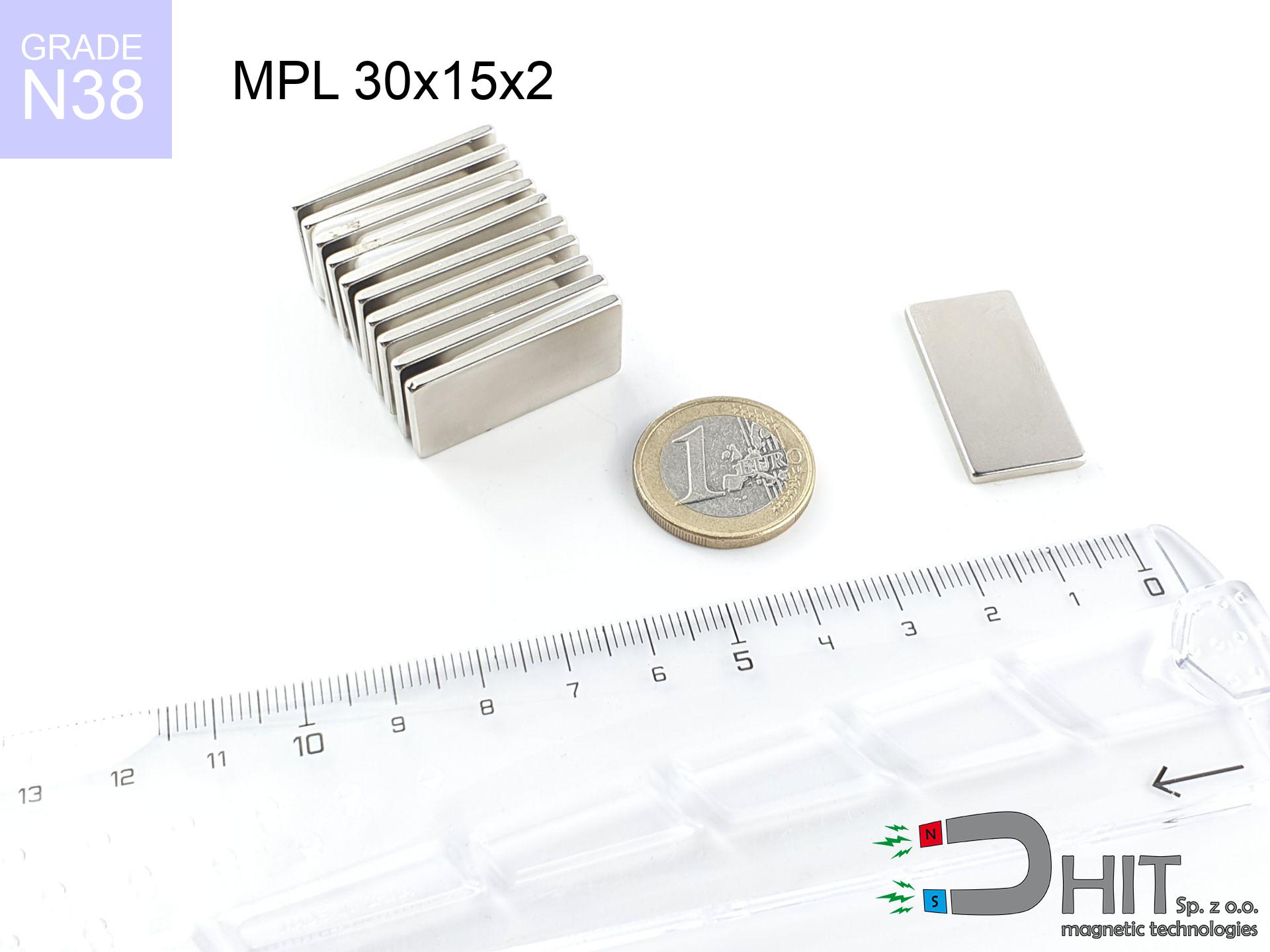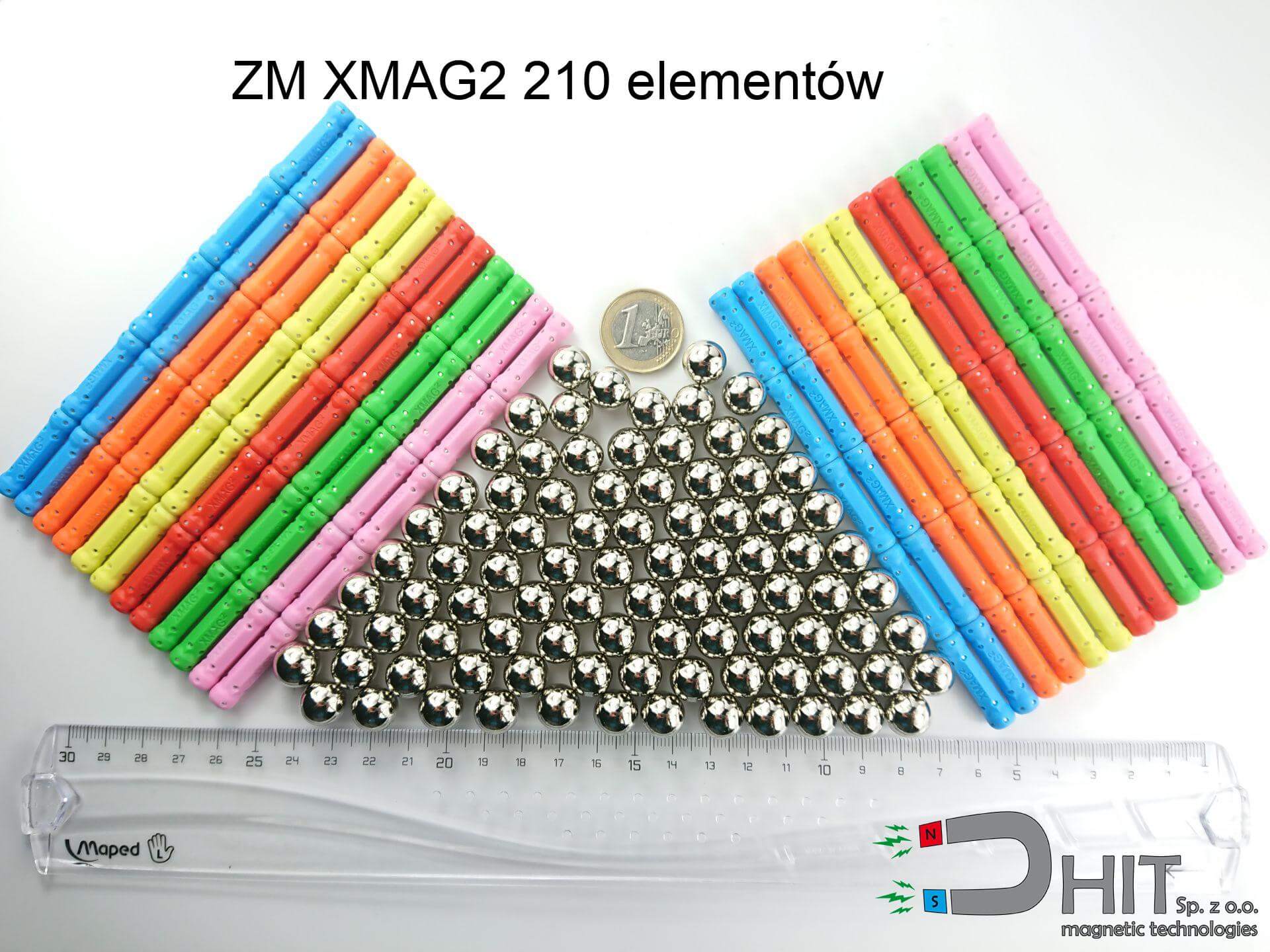MW 35x5 / N38 - cylindrical magnet
cylindrical magnet
Catalog no 010059
GTIN: 5906301810582
Diameter Ø
35 mm [±0,1 mm]
Height
5 mm [±0,1 mm]
Weight
36.08 g
Magnetization Direction
↑ axial
Load capacity
9.68 kg / 94.93 N
Magnetic Induction
170.30 mT
Coating
[NiCuNi] nickel
13.81 ZŁ with VAT / pcs + price for transport
11.23 ZŁ net + 23% VAT / pcs
bulk discounts:
Need more?Looking for a better price?
Pick up the phone and ask
+48 22 499 98 98
alternatively send us a note using
form
the contact form page.
Force and form of a neodymium magnet can be verified using our
online calculation tool.
Same-day shipping for orders placed before 14:00.
Magnetic properties of material N38
Physical properties of sintered neodymium magnets Nd2Fe14B at 20°C
Shopping tips
Pros and cons of NdFeB magnets.
Besides their immense pulling force, neodymium magnets offer the following advantages:
- They do not lose strength, even over around ten years – the decrease in lifting capacity is only ~1% (theoretically),
- They possess excellent resistance to magnetic field loss as a result of external magnetic sources,
- The use of an shiny layer of noble metals (nickel, gold, silver) causes the element to be more visually attractive,
- Magnets possess extremely high magnetic induction on the outer side,
- Due to their durability and thermal resistance, neodymium magnets can operate (depending on the form) even at high temperatures reaching 230°C or more...
- Thanks to flexibility in constructing and the capacity to customize to complex applications,
- Versatile presence in innovative solutions – they are utilized in HDD drives, motor assemblies, precision medical tools, and modern systems.
- Compactness – despite small sizes they generate large force, making them ideal for precision applications
Disadvantages of neodymium magnets:
- To avoid cracks under impact, we suggest using special steel holders. Such a solution protects the magnet and simultaneously improves its durability.
- We warn that neodymium magnets can lose their power at high temperatures. To prevent this, we advise our specialized [AH] magnets, which work effectively even at 230°C.
- Magnets exposed to a humid environment can corrode. Therefore during using outdoors, we recommend using water-impermeable magnets made of rubber, plastic or other material protecting against moisture
- Due to limitations in creating nuts and complex shapes in magnets, we recommend using cover - magnetic mount.
- Potential hazard resulting from small fragments of magnets are risky, when accidentally swallowed, which becomes key in the context of child health protection. It is also worth noting that small components of these devices are able to be problematic in diagnostics medical in case of swallowing.
- High unit price – neodymium magnets have a higher price than other types of magnets (e.g. ferrite), which increases costs of application in large quantities
Maximum lifting force for a neodymium magnet – what it depends on?
Information about lifting capacity is the result of a measurement for ideal contact conditions, taking into account:
- using a plate made of mild steel, serving as a circuit closing element
- with a cross-section minimum 10 mm
- with an ground contact surface
- without the slightest clearance between the magnet and steel
- for force applied at a right angle (pull-off, not shear)
- in neutral thermal conditions
What influences lifting capacity in practice
Holding efficiency is influenced by working environment parameters, such as (from priority):
- Clearance – the presence of any layer (rust, dirt, air) acts as an insulator, which reduces capacity steeply (even by 50% at 0.5 mm).
- Force direction – note that the magnet holds strongest perpendicularly. Under sliding down, the holding force drops significantly, often to levels of 20-30% of the nominal value.
- Base massiveness – insufficiently thick sheet does not accept the full field, causing part of the flux to be wasted to the other side.
- Material composition – different alloys reacts the same. High carbon content worsen the attraction effect.
- Base smoothness – the smoother and more polished the surface, the better the adhesion and stronger the hold. Roughness creates an air distance.
- Temperature influence – high temperature weakens magnetic field. Too high temperature can permanently demagnetize the magnet.
* Holding force was checked on the plate surface of 20 mm thickness, when the force acted perpendicularly, in contrast under shearing force the load capacity is reduced by as much as fivefold. Moreover, even a minimal clearance {between} the magnet’s surface and the plate reduces the load capacity.
Safety rules for work with neodymium magnets
Fire risk
Drilling and cutting of NdFeB material carries a risk of fire risk. Neodymium dust reacts violently with oxygen and is difficult to extinguish.
Heat sensitivity
Keep cool. NdFeB magnets are susceptible to temperature. If you need operation above 80°C, ask us about HT versions (H, SH, UH).
Finger safety
Big blocks can crush fingers in a fraction of a second. Never put your hand betwixt two attracting surfaces.
Implant safety
People with a pacemaker should maintain an safe separation from magnets. The magnetism can interfere with the operation of the implant.
Protective goggles
Beware of splinters. Magnets can explode upon violent connection, launching sharp fragments into the air. We recommend safety glasses.
Handling rules
Exercise caution. Neodymium magnets act from a distance and connect with huge force, often faster than you can react.
Nickel allergy
Studies show that nickel (the usual finish) is a potent allergen. For allergy sufferers, avoid touching magnets with bare hands or opt for coated magnets.
Precision electronics
Remember: neodymium magnets generate a field that interferes with precision electronics. Maintain a safe distance from your phone, tablet, and navigation systems.
Electronic devices
Do not bring magnets close to a purse, computer, or TV. The magnetic field can irreversibly ruin these devices and erase data from cards.
Do not give to children
Absolutely keep magnets away from children. Risk of swallowing is significant, and the effects of magnets clamping inside the body are life-threatening.
Safety First!
Details about risks in the article: Safety of working with magnets.









